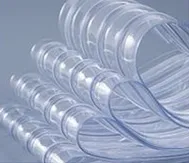freezer curtain material
The Importance of Freezer Curtain Material A Comprehensive Guide
In many industries, particularly in food storage and processing, the importance of maintaining a controlled environment cannot be overstated. One key component in achieving this is the use of freezer curtains. Specifically designed to minimize thermal loss, these curtains play a crucial role in maintaining the integrity of cold storage areas. However, the effectiveness of freezer curtains largely depends on the materials used in their construction. In this article, we will explore various materials used for freezer curtains, their benefits, and considerations for selection.
Understanding Freezer Curtains
Freezer curtains, also known as strip curtains, are typically installed in doorways or entryways of cold storage units, such as freezers, walk-in coolers, and refrigerated trucks. They consist of flexible strips made from materials that can withstand extreme cold while providing insulation. These curtains serve multiple purposes they help maintain temperature, reduce energy costs, minimize the entry of contaminants, and improve safety by allowing easy passage for workers and equipment.
Popular Materials for Freezer Curtains
1. PVC (Polyvinyl Chloride) PVC is one of the most common materials used for freezer curtains. Its flexibility and durability make it an ideal choice for environments where temperature fluctuations occur. PVC curtains are resistant to moisture, which is essential for preventing mold growth and ice buildup. Moreover, they can be manufactured to various thicknesses and transparencies, allowing for customization based on specific needs.
2. Polyester Polyester is another useful material for freezer curtains. It offers excellent resistance to tearing and abrasion, making it suitable for high-traffic areas. Unlike PVC, polyester is often preferred for its lightweight nature and ease of cleaning. Additionally, polyester curtains can be treated to enhance their insulation properties, providing further temperature control.
3. TPE (Thermoplastic Elastomer) TPE is a newer entrant in the freezer curtain market. This material combines the flexibility of rubber with the durability of plastic, resulting in curtains that are particularly resistant to extreme temperatures. TPE curtains do not become brittle under cold conditions, making them a long-lasting option. Furthermore, they can be produced with antimicrobial properties, which is particularly beneficial in food storage environments.
4. Vinyl Vinyl curtains are also a popular choice for freezer environments. Similar to PVC, vinyl curtains are effective at insulating cold air and preventing unwanted heat gain. They are easy to clean and can be manufactured in various colors and thicknesses to suit aesthetic preferences as well as functional requirements.
freezer curtain material

Benefits of Using Quality Freezer Curtain Material
Choosing the right material for freezer curtains has numerous benefits. Firstly, high-quality materials contribute to energy efficiency by reducing heat exchange between the inside of the freezer and the surrounding environment. This leads to lower energy costs and a reduced carbon footprint.
Secondly, materials that are durable and resistant to wear and tear increase the lifespan of the curtains, ensuring that businesses do not incur frequent replacement costs. Moreover, the selection of appropriate materials can enhance workplace safety by providing clear visibility while allowing for the free movement of personnel and equipment without compromising the cold chain process.
Considerations for Selecting Freezer Curtain Material
When selecting the right material for freezer curtains, there are several factors to consider
- Temperature Range Assess the minimum and maximum temperatures the curtains will be exposed to and choose a material that can withstand these extremes. - Traffic Levels Consider the amount of traffic through the curtain area. High-traffic areas may benefit from more durable materials, such as polyester or TPE. - Cleaning and Maintenance Evaluate the ease of cleaning the material. Some materials are more resistant to stains and mold, making maintenance simpler. - Aesthetic Needs Determine whether visibility is important in your specific situation. Some materials offer transparency, while others provide more privacy.
Conclusion
In conclusion, the material used for freezer curtains plays a significant role in their effectiveness and longevity. By understanding the various options available—such as PVC, polyester, TPE, and vinyl—businesses can make informed decisions that optimize their cold storage environments. Prioritizing quality materials will not only enhance operational efficiency but also contribute to maintaining food safety and reducing overall costs. Investing in the right freezer curtain material is, therefore, an essential step for any organization that values its cold storage systems.
-
Flexible PVC Sheet Supplier – Durable Flexible Plastic & Ribbed Sheets Custom SolutionsNewsJun.10,2025
-
Magnetic Curtain Wide – Durable, Easy Install, Perfect Fit for DoorsNewsJun.10,2025
-
Flat Anti-Insect PVC Strip Curtain Effective Insect Control SolutionNewsJun.10,2025
-
Opaque PVC Strip Curtains Insect-Proof & Privacy SolutionsNewsMay.30,2025
-
3mm PVC Sheets - Durable, Lightweight & Waterproof 1mm & Rolls AvailableNewsMay.30,2025
-
Polar Curtains Energy-Efficient Thermal Insulation Solutions Shop NowNewsMay.29,2025



